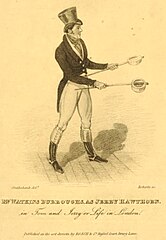Tom and Jerry are cat and mouse cartoon characters, Tom Cat and Jerry Mouse, that debuted in 1940. The names are derived from a humoristic novel originally created by Pierce Egan in 1821.
Pierce Egan (1772–1849) was a British journalist, sportswriter, and writer on popular culture. His popular book Life in London, published in 1821, was adapted into the stage play Tom and Jerry, or Life in London later that year, which became the first play to have a continuous run of 100 performances in London while at the Adelphi Theatre in the West End.
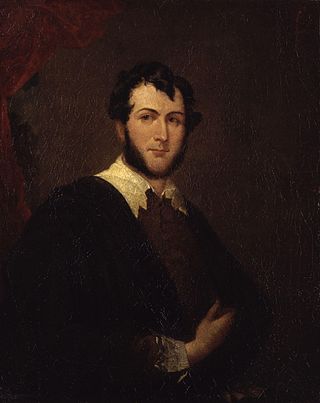
George Cruikshank or Cruickshank was a British caricaturist and book illustrator, praised as the "modern Hogarth" during his life. His book illustrations for his friend Charles Dickens, and many other authors, reached an international audience.

Tom Cribb was an English bare-knuckle boxer of the 19th century. He was All England Champion from 1808-1822.

A Tom and Jerry is a traditional Christmastime cocktail in the United States, sometimes attributed to British writer and professional boxing journalist Pierce Egan in the 1820s. It is a variant of eggnog with brandy and rum added and served hot, usually in a mug or a bowl.
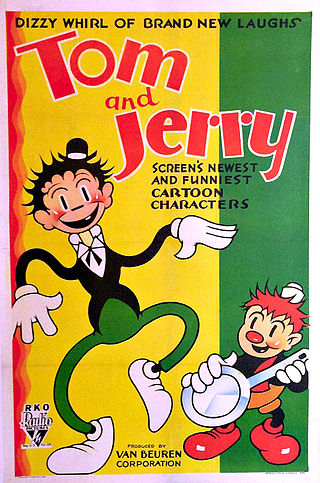
Tom and Jerry are fictional characters that starred in a series of early sound cartoons produced by the Van Beuren Studios, and distributed by RKO Pictures. The series lasted from 1931 to 1933.

William Terriss, born as William Charles James Lewin, was an English actor, known for his swashbuckling hero roles, such as Robin Hood, as well as parts in classic dramas and comedies. He was also a notable Shakespearean performer. He was the father of the Edwardian musical comedy star Ellaline Terriss and the film director Tom Terriss.

Puss Gets the Boot is a 1940 American animated short film and is the first short in what would become the Tom and Jerry cartoon series, though neither were yet referred to by these names. It was directed by William Hanna, Joseph Barbera, and produced by Rudolf Ising. It was based on the Aesop's Fable, The Cat and the Mice. As was the practice of MGM shorts at the time, only Rudolf Ising is credited. It was released to theaters on February 10, 1940, by Metro-Goldwyn-Mayer.
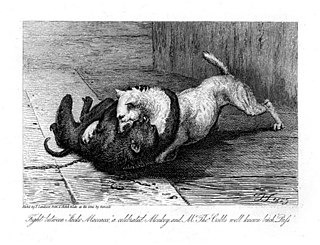
Jacco Macacco was a fighting ape or monkey who was exhibited in monkey-baiting matches at the Westminster Pit in London in the early 1820s. He achieved some measure of fame among the sporting community through his reputed prodigious record of victories against dogs, but was brought to wider attention by depiction in popular literature, artworks and by citation in speeches to Parliament by the animal welfare campaigner Richard Martin. Jacco's most famous fight, against the equally well-known bitch Puss, seems to have marked the end of his career: he may have died as a result of injuries received during the match or of an unrelated illness sometime afterwards. His ashes are claimed to be housed at the True Crime Museum in Hastings, East Sussex.
William Thomas Moncrieff commonly referred as W.T. Moncrieff was an English dramatist and author.

Frances "Fanny" Elizabeth Fitzwilliam was an English actress.

Robert Keeley was an English actor-manager, comedian and female impersonator of the nineteenth century. In 1823 he originated the role of 'Fritz' in Presumption; or, the Fate of Frankenstein, the first known stage adaptation of Mary Shelley's novel Frankenstein.

Daniel Terry (1780?–1829) was an English actor and playwright, known also as a close associate of Sir Walter Scott.

Billy Waters was a black man who busked in London in the nineteenth century by singing, playing the violin and entertaining theatre goers with his "peculiar antics". He became famous when he appeared as a character in William Thomas Moncrieff's Tom and Jerry, or Life in London in 1821.
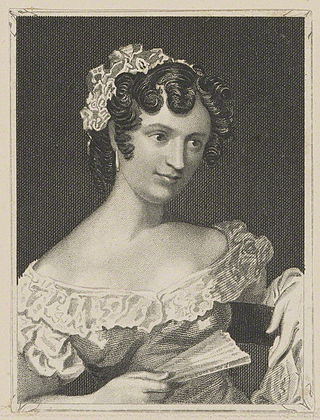
Harriet Waylett was an English actress and theatre manager.
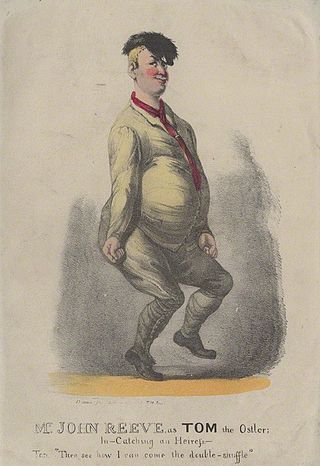
John Reeve (1799–1838) was an English comic actor. His early career was based on mimicry: he became a popular favourite, able to continue in highly-paid work, despite drinking heavily and not learning his parts.
Life in London may refer to:
William Alexander Brown, also known as William Henry Brown (1790–1884), was an American playwright and theatrical producer. He is considered the first known black playwright in America.

Life in London – in full, Life in London; or, The Day and Night Scenes of Jerry Hawthorn, Esq., and his elegant friend, Corinthian Tom, accompanied by Bob Logic, the Oxonian, in their Rambles and Sprees through the Metropolis – is a book by the author and journalist Pierce Egan, first published in 1821. It depicts the progress through London of two young men and their associates, encountering both high- and low-life. The book has coloured illustrations by George and Robert Cruikshank, which were much admired at the time and subsequently.

Runs of several thousand performances were familiar in West End theatres in the 21st century. The closure of London theatres in the Covid-19 pandemic halted the continuous runs of eight shows that had been running for more than 4,000 performances. Such long runs were a phenomenon not seen before the late 20th century: in earlier years, much shorter runs were the norm, even for shows considered great successes.


